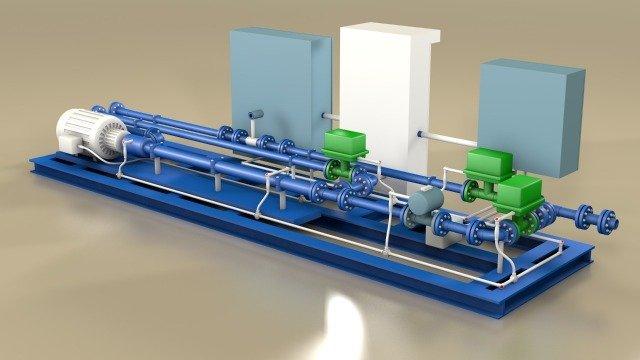
The Lift Pod uses its controller and software to automatically perform gas-lift unloading operations and deliver an optimized gas-liquid mixture. (Source: Lift Well International)
Learn more about Hart Energy Conferences
Get our latest conference schedules, updates and insights straight to your inbox.
Operators have sourced a myriad of artificial lift techniques to increase production from deep, high-temperature wells, both onshore and offshore. Electric submersible pumps (ESP) have been the favored system for resolving downhole issues, but the equipment wears tremendously due to the harsh conditions, compromising its long-term dependability.
Lift Well International’s President and Co-Founder Tim Bridges, along with Paulo Waltrich, co-founder and CTO, developed the Lift Pod technology to allow conventional artificial lift methods to better suit unconventional wells.
“We have been able to resolve a lot of the problems with ESP,” Paulo Waltrich said. “But no type of reciprocation equipment—whether it be a pump, a car engine or a ESP in the ground—perform very well when you have sand and debris in the fluids that are used to lubricate and pump through the equipment.”
The Lift POD technology is a new liquid-assisted gas-lift method that eliminates downhole equipment such as high-pressure compressors and downhole valves, all while performing from a box placed near the well.
The old method, as he described it, would have been to go to the well and confirm the problem, schedule an intervention which includes bringing in workover intervention rigs and possibly coil tubing, open up the wellhead, pull the equipment out of the well, make repairs, and perform that whole operation again to get the repaired equipment back into the well.
This technique uses the technology’s software to dispatch a gas-liquid mixture, which gradually changes the density of the circulating fluid in the wellbore. The change in density enables the removal of heavier fluids, like sand, out of the wellbore and decreases the bottomhole pressure below the reservoir pressure to prompt production.
Bridges said the problem with conventional technology is that it was designed for conventional vertical wells. When ESPs hit the horizontal section of the well, the equipment becomes ineffective because it is faced with solids and high gas-liquid ratios.
“With the current technology, not only do you have to possibly use two or three different artificial lift technologies in the life of the well, but because of so much frac sand in the well and slugging from the well—because of the terrain in the horizontal part of the well—that typical artificial lift equipment that is used on the wells suffers from that and it doesn’t perform very well,” Bridges said.
Complications with the antiquated design include high repair costs, intervention, and lost production, he added.
Conventional gas lift requires multiple unloading valves and mandrels that decrease the injection pressure. The Lift POD, however, removes valves which reduces the risk of tubing-to-casing leaks and well interventions.
“The life-cycle on an unconventional well is a lot different than a conventional well, so people are looking for ways to optimize the well’s performance with a different technology,” Bridges said. “Our idea for this technology is to run it over most of the well’s life, so you eliminate those downhole repairs and interventions.”
The method has shown it can lower the surface injection pressure requirements by up to 75%, according to Bridges. So far, the company has worked with national oil companies in the East, onshore customers in the Permian Basin and conducted proof of concept work with Louisiana State University.
The Lift POD allows operators to monitor injection pressures remotely and in real-time. “Because this is a surface piece of equipment with a RTU that’s transferring information over modem, it gives the customer the opportunity to look at every individual well and change the gas flow, gas liquid flow or gas liquid chemical flow to any individual well at any moment through their computer,” he said.
The moveable box can be applied across a well, pad or even an entire field and can be reused for other wells.
Recommended Reading
BKV CEO Chris Kalnin says ‘Forgotten’ Barnett Ripe for Refracs
2024-04-02 - The Barnett Shale is “ripe for fracs” and offers opportunities to boost natural gas production to historic levels, BKV Corp. CEO and Founder Chris Kalnin said at the DUG GAS+ Conference and Expo.

